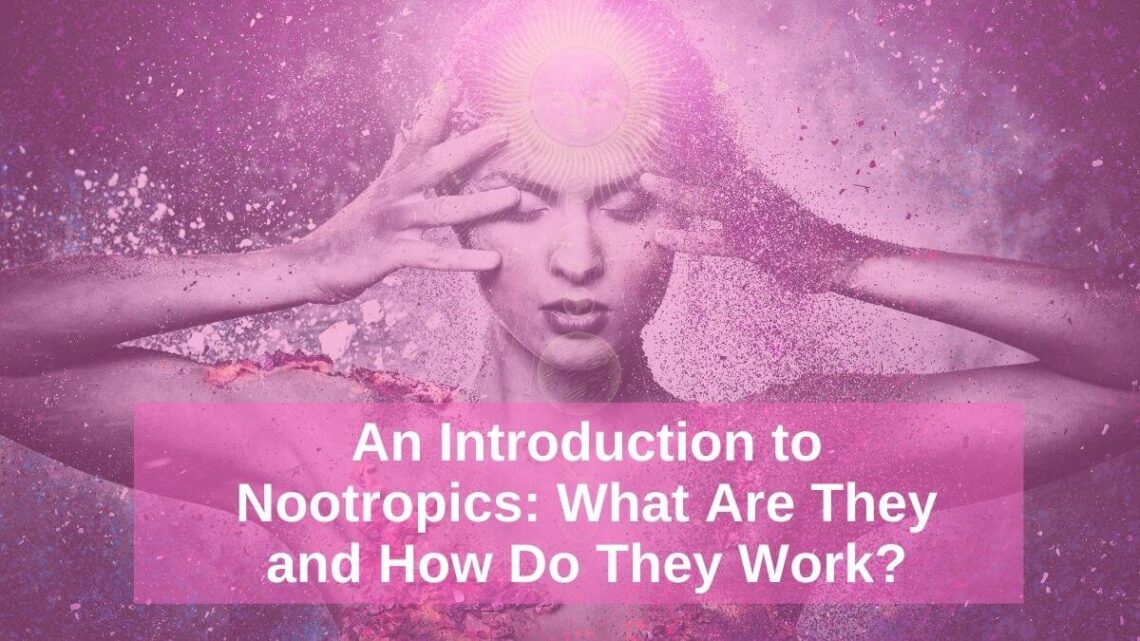
An Introduction to Nootropics: What Are They and How Do They Work?
March 1, 2023In today’s fast-paced world, it is important to stay sharp and focused. Many people turn to nootropics, or “smart drugs,” to enhance their cognitive abilities. But what are nootropics, and how do they work? In this article, we’ll provide an introduction to nootropics and their effects on the brain.
What are Nootropics?
Nootropics are a class of supplements, drugs, and other substances that are believed to enhance cognitive function, memory, creativity, motivation, and overall brain health. They are also known as “smart drugs,” “cognitive enhancers,” or “brain boosters.” The term “nootropic” was coined in 1972 by Romanian psychologist and chemist Corneliu Giurgea, who defined them as “substances that enhance learning and memory without causing sedation or stimulation.”
Nootropics can be either natural or synthetic. Some examples of natural nootropics include caffeine, omega-3 fatty acids, and ginkgo biloba. Synthetic nootropics include prescription drugs like modavinil 200, armodafinil, and Modafinil. Many nootropics are available over the counter as dietary supplements, although some of them are still in the research phase and not yet approved by the FDA.
How do Nootropics Work?
The mechanisms of action of nootropics vary depending on the specific substance, but in general, they work by modulating or enhancing the activity of neurotransmitters, which are the chemical messengers that allow neurons to communicate with each other.
For example, some nootropics increase the production of acetylcholine, a neurotransmitter that is involved in learning and memory. Others increase the levels of dopamine, which is associated with motivation, reward, and pleasure. Still, others enhance the activity of glutamate, an excitatory neurotransmitter that is important for synaptic plasticity, or the ability of the brain to adapt and change in response to new experiences.
Nootropics can also increase blood flow to the brain, improve oxygenation and glucose metabolism, and reduce inflammation and oxidative stress, all of which can enhance cognitive function and protect against neurodegenerative diseases.
Types of Nootropics
There are several different types of nootropics, each with their own unique effects on the brain. Here are some of the most common types:
Racetams: These are a family of synthetic nootropics that are structurally related to the neurotransmitter GABA. Examples include piracetam, aniracetam, and oxiracetam. Racetams are believed to enhance memory, learning, and attention by increasing the activity of acetylcholine and glutamate.
Stimulants: These are drugs that increase alertness, attention, and energy. Examples include caffeine, amphetamines, and ephedrine. Stimulants work by increasing the levels of dopamine, norepinephrine, and adrenaline in the brain.
Adaptogens: These are natural substances that help the body adapt to stress and maintain homeostasis. Examples include ashwagandha, Rhodiola rosea, and ginseng. Adaptogens are believed to reduce stress, improve mood, and enhance cognitive function by modulating the hypothalamic-pituitary-adrenal (HPA) axis and the stress response.
Nootropic stacks: These are combinations of different nootropics that are taken together to enhance their effects. Some popular nootropic stacks include the CILTEP stack (consisting of artichoke extract and forskolin), the racetam stack (combining piracetam with other racetams), and the caffeine-L-theanine.
Cholinergics: These are substances that increase the production or activity of acetylcholine in the brain. Examples include choline, alpha-GPC, and huperzine A. Cholinergics are believed to enhance memory, learning, and attention by increasing the availability of acetylcholine in the brain.
Safety?
The safety of nootropics depends on the specific substance and the dosage used. Some natural nootropics, such as caffeine and omega-3 fatty acids, are generally considered safe when used in moderation. However, synthetic nootropics, such as prescription drugs like Adderall and Ritalin, can have serious side effects when abused or used without a prescription.
Some common side effects of nootropics include insomnia, anxiety, headaches, nausea, and gastrointestinal distress. Long-term use of certain nootropics may also lead to tolerance, dependence, or withdrawal symptoms.
It is important to consult a healthcare professional before taking any nootropic, especially if you have a medical condition or are taking other medications. Some nootropics may interact with certain medications or exacerbate underlying health problems.
Conclusion
Nootropics are a diverse class of supplements, drugs, and other substances that are believed to enhance cognitive function, memory, creativity, motivation, and overall brain health. They work by modulating or enhancing the activity of neurotransmitters, increasing blood flow to the brain, improving oxygenation and glucose metabolism, and reducing inflammation and oxidative stress.
There are several different types of nootropics, each with their own unique effects on the brain, and their safety depends on the specific substance and the dosage used. While some natural nootropics are generally considered safe when used in moderation, synthetic nootropics can have serious side effects when abused or used without a prescription.
As with any supplement or medication, it is important to consult a healthcare professional before taking any nootropic, especially if you have a medical condition or are taking other medications. With the right guidance and caution, nootropics may be able to enhance your cognitive abilities and improve your overall brain health.





